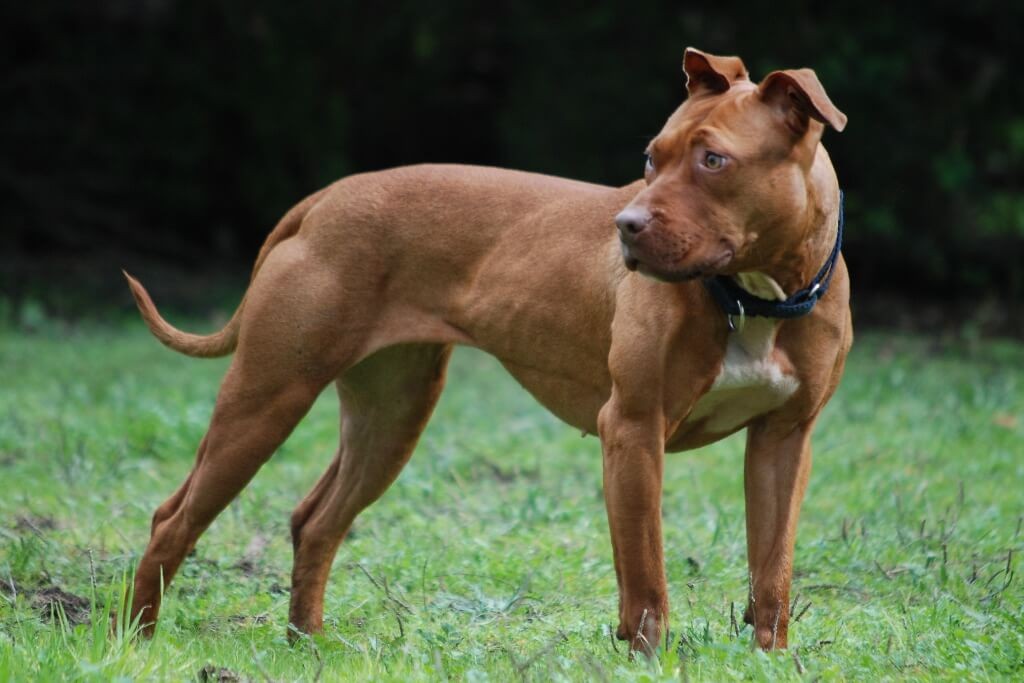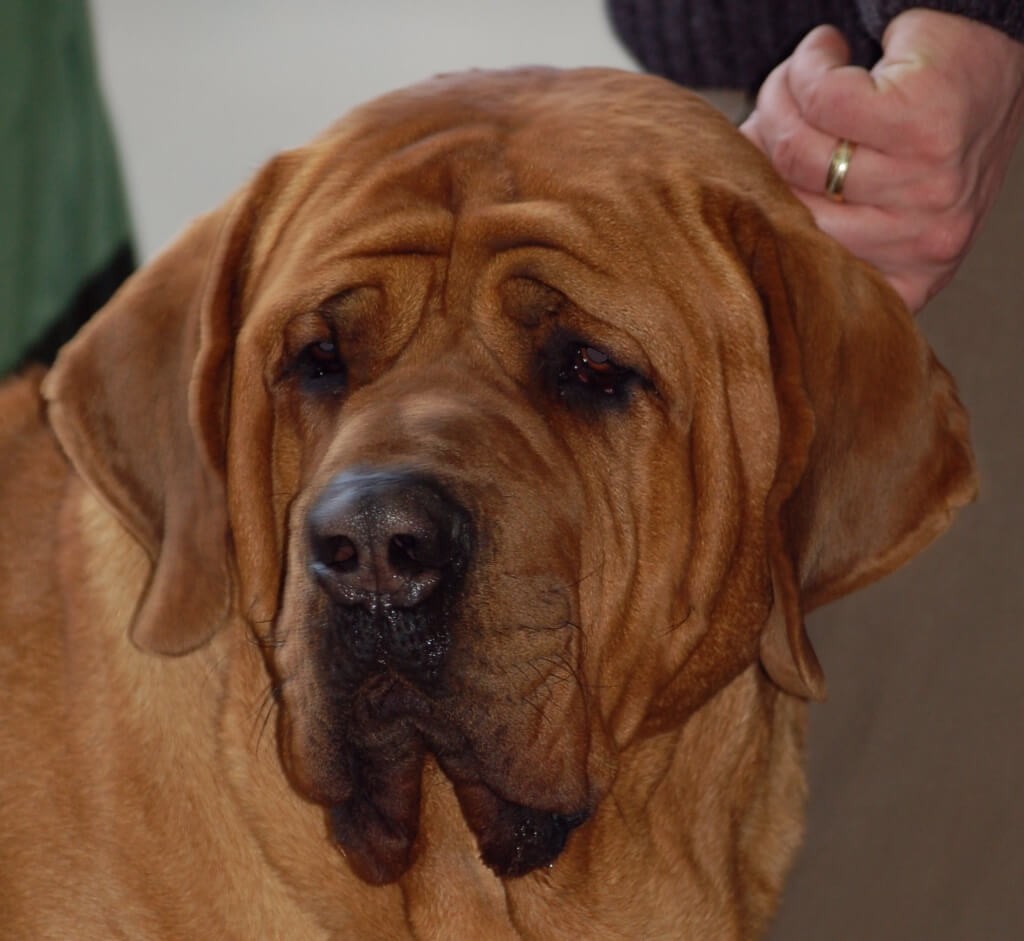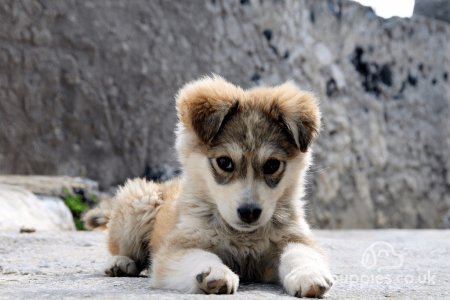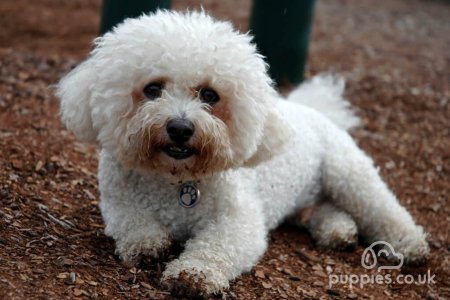4 Banned Dog Breeds in the UK

There are four banned dog breeds in the UK, this is a result of the Dangerous Dog Act that was introduced in 1991 in an effort to put a stop to illegal dogfighting.
The act was introduced following a number of fatal incidents involving dogs and means it is illegal to own, sell, give away, abandon, or breed a dog that is “dangerously out of control” in public. In 2014, the act was updated to include private property.
The Dangerous Dog Act currently applies to Dogo Argentinos, Pit Bull Terriers, Japanese Tosas, and Fila Brasileiros.
1. Pit Bull Terrier

Attribution 2.0 Generic (CC BY 2.0) - Stacy
The Pit Bull Terrier was bred in England to be a fighting dog. The breed was popular in the 1800s and was used in blood sports including bull baiting and bear baiting (which have been illegal since 1835). Pit Bulls were also used in dogfighting, which is more difficult to police than baiting activities.
Pit Bull type dogs may include American Staffordshire Terriers and Irish Staffordshire Terriers. Staffordshire Bull Terriers are not listed and can be owned in the UK.
Pit Bulls are banned in a number of countries including Argentina, Bavaria, Belarus, Bermuda, Denmark, Ecuador, Finland, France, Guyana, Ireland, Israel, Italy, Latvia, Liechtenstein, Malaysia, Malta, New Zealand, Norway, Poland, Portugal, Puerto Rico, Romania, Russia, Singapore, Spain, Switzerland, Turkey, the UEA, Ukraine, and Venezuela.
In addition to this, Pitbulls are banned in parts of Germany, Japan, Canada, China, Brazil, Belgium, Austria, and Australia.
2. Japanese Tosa

Attribution-ShareAlike 2.5 Generic (CC BY-SA 2.5) - Lily M
The Japanese Tosa was bred in Asia for use in blood sports. The Tosa is said to fight silently as in Japanese rules the dogs were not allowed to make a sound when fighting. The Tosa is a mix of various breeds including indigenous Japanese dogs and Western breeds such as the Bull Terrier and Mastiff.
The Japanese Tosa is also listed as one of the illegal dog breeds in; Norway, Malta, Denmark, Australia, Cyprus, Hong Kong, Malaysia, New Zealand, St Kitts and Nevis, St Lucia, and UAE.
3. Dogo Argentino
CC0 1.0 Universal (CC0 1.0) Public Domain Dedication - joseltr
The Dogo Argentino was developed in Argentina to hunt animals such as wild boars. This large, white dog is a pack hunter and is fast, strong, and alert. The Dogo Argentino was bred with a mix of dogs including the Cordoba Fighting Dog (now extinct), the Great Dane, Irish Wolfhound, and Dogue de Bordeaux.
Other countries the Dogo Argentino is banned in include; Portugal, New Zealand, Australia, Bermuda, Cyprus, Denmark, Hong Kong, Malaysia, St Kitts and Nevis, St Lucia, and Singapore.
4. Fila Brasileiro

Attribution-ShareAlike 3.0 Unported (CC BY-SA 3.0) - Pleple2000
The Fila Brasileiro is also known as the Brazilian Mastiff and is primarily used for hunting. The dogs are known to be excellent trackers and share ancestry with Bloodhounds, Mastiffs, and Bulldogs.
The Fila Brasileiro is banned in a number of countries including; Australia, Norway, Denmark, New Zealand, Hong Kong, Malaysia, Fiji, Malta, Turkey, St Kitts and Nevis, St Lucia, and Singapore.
Do You Have A Banned Dog Breed? Here’s What Could Happen
If you have one of these illegal dog breeds in the UK then the police or council warden can take the dog away (even if the dog is well-behaved and there has not been a complaint). Officers will identify breeds based on their appearance rather than their breed or name so you could still get into trouble even if you think your pet is legal.
If the dog is in public, the police can confiscate it but if the dog is on private property a warranty is needed. If the police have a warrant for something else on the property (e.g. a drug search) they are also able to seize your dog.
After confiscation, the dog will be kept in kennels while the council or police apply to a court. Experts will then judge what type of dog it is and whether it is considered a danger to the public. The outcome of this will decide if the dog is released and returned to the owner or not. The owner will also need to prove the dog is not a banned breed for it to be returned.
If you plead guilty or can’t prove the dog is not a banned breed then you will be convicted and may receive a fine or be sent to prison for up to six months. The dog will also be put down. However, there are a few exemptions to note. If you have a banned breed but you can prove your dog is safe you can apply for a certificate of exemption.
This certificate means you can keep the dog but you will need to:
Be over 16 years old
Get special insurance in case the dog injures other people
Keep your dog in a secure place where they cannot escape
Keep your dog on a lead and muzzled in public
The certificate of exemption lasts the duration of the dog’s life and the dog needs to be microchipped and neutered. You must let the Index of Exempted Dogs know if you move house or your dog passes away.












